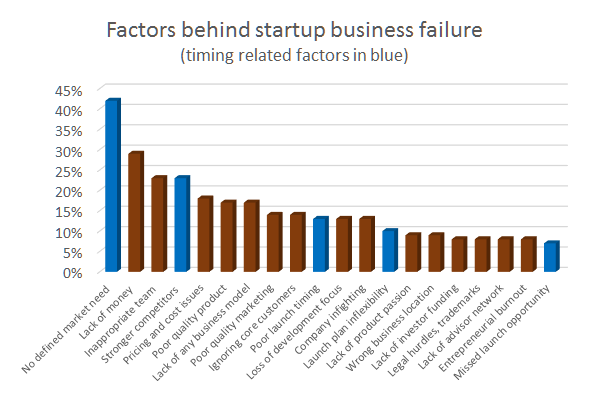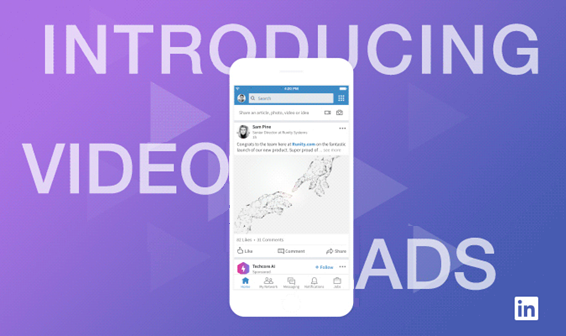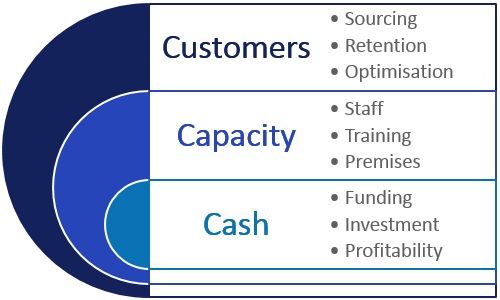When we first go in to meet the owner of an SME business to discuss how best to grow their organisation, a question we’re commonly asked is ‘what do I say on social media?’ The answer quite rightly is, of course, it depends.
Whilst most business owners understand things like TV advertising and the importance of having a website that resizes itself depending on what device you’re looking at it on, many get perplexed about social media.
Apparently there are 92% of CEOs registered on social media, but less than a third who contribute anything to it regularly. In a busy business world, where so many days are spent fire-fighting, social media is one of those areas many owners feel slightly overwhelmed about. And the issue for SME owners, those smaller businesses with maybe 5 to 50 staff, is they feel they never have enough time to think about marketing at all, let alone social media. And that means few spare moments to consider their overall marketing strategy and direction, or what message to say, or where and how social media or other marketing delivery methods best fits into their marketing plans.
And that brings us on to the crux of the issue. Our research shows most SME owners have a business plan, even if it’s only a basic one. However, few SMEs create enough time to develop a detailed marketing plan, something which is usually much farther down their list of priorities.
So, without a detailed marketing strategy or plan, how do you decide on the relative importance of social media in a B2B world, or any other marketing method come to that? One of the biggest challenges revealed from our research is that many business owners run their businesses instinctively, and they do a pretty good job of it too to be honest. However, a significant proportion of SME owners don’t have a formal business education, and naturally rely on subject matter experts in their organisations to advise them on their best course of action. And when that expertise is in the area of finance or factory production then that makes complete sense. That’s because these function still work similarly to the way they did twenty years ago, even though legislation and technology may have changed.
So, if you asked a fifty year old and a twenty five year old accountant or engineer what was important to an SME business in doing their job, their answers probably wouldn’t differ much. OK, the twenty five year old would likely know better how to use complex accounting software, or might be able to program the latest CNC machine to make widgets, but their business contribution would likely be similar, with a useful balance between these two generations of accountants and engineers of experience, skills and technical expertise.
Why social media is such a big part of the SME marketing mix
We hear all the time about how technology has disrupted the marketing industry, resulting in techniques that look nothing like they did ten years ago. If you rewind even further back to twenty years ago, there’s a good chance that the new marketers of today wouldn’t even recognise what we referred to as marketing. And that’s half the problem.
The issue with marketing is that it has seen faster change in customer targeting techniques, technologies and devices than any other area of business. In the last 20 years we’ve seen an explosion of messaging, sharing, video and other social media platforms, as well as web connected smart TVs and multiple portable handheld internet devices. All of which, within less than a decade, we’ve become so used to being contacted on and marketed to with.
Here’s just a few examples of the seismic changes for B2B marketing in the last 20 years, with a tongue in cheek look at the world launches of social media platforms and web-connected devices:
- 1999 MSN and Yahoo messenger services launch, so we can talk to connected PCs or over the internet
- 2002 LinkedIn launches, fast becoming the B2B platform of choice. But we can’t use it on the move yet…
- 2003 Skype is launched, the first video calling service, to let us talk to talk to racist grannie in South Africa
- 2004 Facebook starts, and by 2005 we have features to tag our drunk friends in photos taken at parties
- 2005 YouTube launches, giving us endless opportunities to watch videos of cats playing the piano
- 2006 Twitter starts, popular in Brazil and India before becoming the platform of choice for US presidents
- 2007, just 12 years ago, the first smartphones start to appear on the market, to exercise our fingers
- 2008 Samsung launches the first smart TV, to watch films and binge box-sets online for the first time
- 2010, less than ten years ago, the first tablet devices appear, to help our children to play games on
- 2011 snapchat launches, so the world begins to understand exactly what ‘dick pic’ really means
- 2012-2018, lots of social media platforms go public, lots shut down, and the Cambridge Analytica scandal
So when SME businesses start to really focus on marketing for the first time, they often focus on social media marketing, because it looks like the fastest return for the smallest effort. And that’s perhaps the biggest benefit and the biggest issue with social media. There’s no doubt social media is great for brand awareness for one simple reason, the number of people that you can potentially reach for a smallish amount of effort.
Unlike a phone call or email or other direct one-to-one contact systems, social media offers a tantalising one to many relationship. So if everyone has the average number of LinkedIn contacts, around 300, the number of people you can potentially reach with your social media messages is 300 x 300 x 300, an amazing 27 million! The trouble is, it’s only those first 300 people that actually know you that you usually influence. How much the other 26,999,700 value your thoughts and opinions is debatable, especially when they’re viewing your post from the other side of the world.
The second reason many SMEs focus on using social media is a bit more obvious, and that’s because many SME business owners don’t employ anyone in marketing until their business gets to a certain scale. Then, the new marketers they employ, perhaps not on the highest salary, are likely to tell them that social media is the answer to their business marketing needs. This is often simply because any young marketer has had the most experience in this one marketing tool, rather than a thorough grounding in other core marketing techniques. To be fair though, when you consider that Millennials have only ever known a world of smartphones, smart TVs and social media, it’s no wonder that their perception of what marketing is focuses mostly on what can be communicated on social media in the online world.
We’re not anti-social media, not at all. Social media platform do offer clear benefits in targeting new customers you want to reach, especially if you have no way of directly approaching them or finding them to get their details onto your business contact database. Both LinkedIn and Facebook offer very sophisticated advertising systems, albeit at a cost, that can target very specific geographies, demographics or interest groups to sell products and services to them.
So social media does have a place in all modern SME marketing, but bear in mind that the B2C and B2B marketing worlds should be treated very differently. We should also accept that all social media, whether personal or business, is a careful fabrication of what we want people to think. Most people take all content that’s shared on social media, whether business or personal, and however well crafted, with a large pinch of salt. And that’s why you should make sure social media is not the ‘be all and end all’ of your marketing communication strategy.
Also remember that what you say to that target audience on social media, to influence them buying from you, will only be as good as your understanding of why people need your product or service, and what triggers they have that make them buy from you. Its only then you can create and develop a good, persuasive, well-thought out marketing campaign, with strong messaging that resonates logically and emotionally with your current and future customers.
Conclusion
Whilst we might think we’re a lot more advanced now as a species with our tech gadgets, and it’s true the world now certainly seems a lot smaller and more interconnected than ever before, we shouldn’t forget that we’re still just apes at heart. Soichiro Honda, the Japanese bike and car creator, said of our existence, ‘Life is measured by the number of times your soul is deeply stirred’. And that means that the things that make us tick are human interactions, emotions and more visceral experiences, even if we don’t like to admit it.
People ultimately buy from people they know, so if your business is not just selling online, then at some point it will need your future clients to make an emotional judgement about you, your business and your products and services. And, ultimately, your new business will ultimately come from people who have met you, know you and trust you.
So work on your marketing plan first, and get it clear in your own mind what it is you can offer, why people might want it, and how best to put that across. Then, and only then, can you decide how you get your message across to your target audience, whether you do it through your website, social media, email, advertising, partners or events.
And to respond to that other question we’re asked by younger SME business owners, ‘how did you do marketing before the internet?’ Well people forget that we’ve always had direct mail, letters, newspapers, trade press magazines, public transport, posters, conferences, sports events, client entertainment and even TV for eighty years. We’ve also had business partners, satisfied customers and networking. But, best of all, we could call people up and arrange for a good old fashioned face to face meeting. And, if it’s a big B2B purchase, let’s face it that’s still often the way the biggest business is done.









